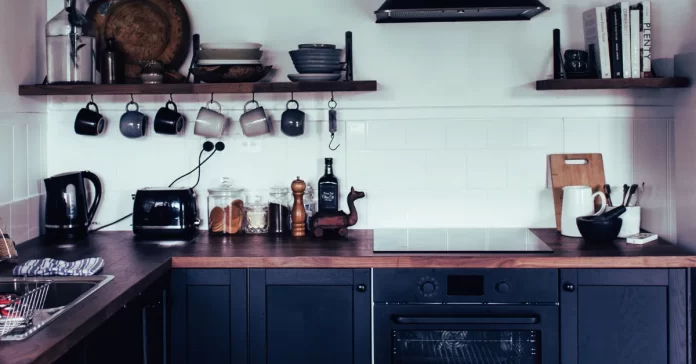Table of Contents
How Renting a Ghost Kitchen Can Help You Maximize Profits
In recent years, the food industry has witnessed a significant shift towards online ordering and food delivery services. As a result, the concept of ghost kitchens, also known as virtual kitchens or cloud kitchens, has gained popularity among restaurant owners and entrepreneurs. Ghost kitchens are commercial facilities equipped for food production and delivery, without the traditional dine-in space. If you’re considering entering the food delivery market or expanding your existing restaurant, it’s crucial to understand the cost-benefit analysis of renting a ghost kitchen. In this article, we will explore the potential advantages and drawbacks to help you make an informed decision.
Ghost kitchens offer an innovative solution to meet the evolving demands of the food industry. By eliminating the costs associated with traditional brick-and-mortar restaurants, such as dining space and front-of-house staff, entrepreneurs can focus solely on food production and delivery. However, before diving into this business model, it’s essential to evaluate the costs and benefits involved.
Advantages of Renting a Ghost Kitchen
Reduced Overhead Costs
Renting a ghost kitchen significantly reduces overhead costs compared to a traditional restaurant. With no need for a physical dining area or customer-facing staff, expenses related to rent, utilities, and labor are minimized. This allows you to allocate more resources towards food production and delivery, potentially maximizing your profitability. By reducing fixed costs, you have more flexibility to invest in high-quality ingredients, efficient equipment, and marketing strategies that can attract more customers and increase revenue.
Flexible Location Options
Ghost kitchens provide flexibility in choosing your location. Since they don’t rely on walk-in traffic, you can select a location based on your operational needs and target market. This flexibility enables you to choose areas with lower rental costs or closer proximity to your target customer base. By strategically positioning your ghost kitchen, you can minimize costs while reaching a larger audience. This can lead to increased order volume, higher customer satisfaction, and ultimately, improved profitability.
Streamlined Operations
Ghost kitchens are specifically designed to optimize efficiency in food production and delivery. With a dedicated space solely for cooking and packaging, you can streamline your operations, eliminate bottlenecks, and enhance productivity. By improving operational efficiency, you can fulfill orders faster, reduce waiting times, and deliver a consistent and high-quality dining experience. This can result in increased customer satisfaction, positive reviews, and repeat orders, all of which contribute to higher profit margins.
Lower Initial Investment
Setting up a ghost kitchen requires a lower initial investment compared to starting a traditional restaurant. Without the need for costly restaurant decor, furniture, or an extensive kitchen setup, your startup costs are significantly reduced. This allows you to allocate funds to other crucial aspects of your business, such as marketing and technology infrastructure. By efficiently managing your startup costs, you can focus on building brand awareness, implementing effective marketing campaigns, and investing in advanced ordering and delivery systems. These investments can attract more customers, improve operational efficiency, and ultimately maximize your profit potential.
Access to Data and Analytics
Ghost kitchens often leverage technology and digital platforms for order management and delivery logistics. This provides you with valuable data and analytics on customer preferences, order patterns, and delivery performance. By analyzing this information, you can make data-driven decisions to optimize your menu, marketing strategies, and operational efficiency. For example, you can identify popular menu items, adjust pricing based on demand, target specific customer segments, and optimize delivery routes. These insights can help you tailor your offerings, improve customer satisfaction, and increase profitability by focusing on what works best for your target market.
Drawbacks and Considerations
Limited Brand Exposure
Without a physical storefront, ghost kitchens may face challenges in building brand recognition and establishing a strong presence in the local community. You need to rely heavily on online marketing, social media presence, and partnerships with food delivery platforms to reach your target audience.
Reliance on Third-Party Delivery Platforms
Ghost kitchens typically partner with third-party delivery platforms for order fulfillment and customer reach. While these platforms offer convenience, they often charge fees and commissions, which can eat into your profit margins. It’s important to carefully assess the financial implications of these partnerships and negotiate favorable terms.
Operational Complexity
Managing a ghost kitchen requires a different skill set compared to traditional restaurant management. You need to effectively coordinate food production, packaging, and delivery logistics. Additionally, maintaining a high level of quality control and ensuring timely deliveries can be challenging. Adequate staff training and operational systems are crucial to overcome these complexities.
Market Saturation and Competition
The rise of ghost kitchens has led to increased competition in the food delivery market. Depending on your location and target audience, you may face significant competition from other virtual kitchens and established restaurants offering delivery services. It’s important to conduct market research and develop a unique value proposition to differentiate your offerings and attract customers.
Limited Customer Interaction
In a ghost kitchen model, there is limited direct interaction with customers. This can make it challenging to receive immediate feedback, address customer concerns, and build a loyal customer base. Implementing effective customer communication channels and leveraging online reviews and feedback platforms become crucial for maintaining customer satisfaction.
Conclusion
Renting a ghost kitchen can be a viable option for entrepreneurs looking to enter the food delivery market or expand their existing restaurant operations. By carefully evaluating the cost-benefit analysis, you can make an informed decision and maximize your profit potential. The reduced overhead costs, flexible location options, streamlined operations, lower initial investment, and access to data and analytics make ghost kitchens an attractive choice for many. However, it’s essential to consider the potential drawbacks such as limited brand exposure, reliance on third-party platforms, operational complexity, market saturation, and limited customer interaction.
Ultimately, the success of renting a ghost kitchen depends on your ability to adapt to the evolving food delivery landscape, differentiate your offerings, and provide exceptional customer experiences. By leveraging technology, implementing effective marketing strategies, and maintaining operational excellence, you can capitalize on the benefits of a ghost kitchen model and carve out a profitable niche in the competitive food delivery market.








